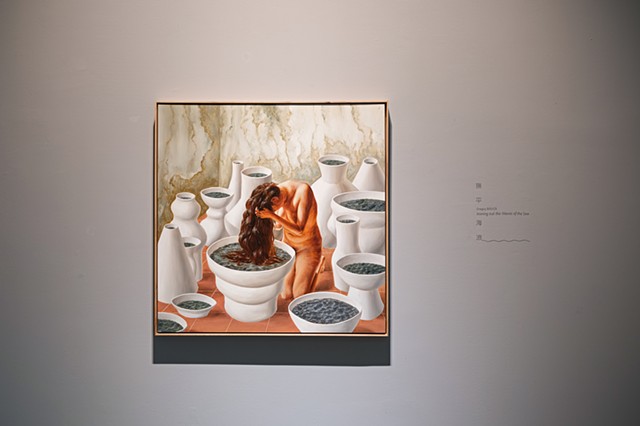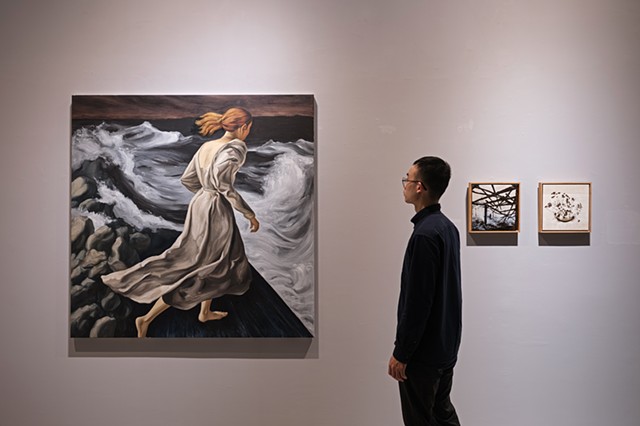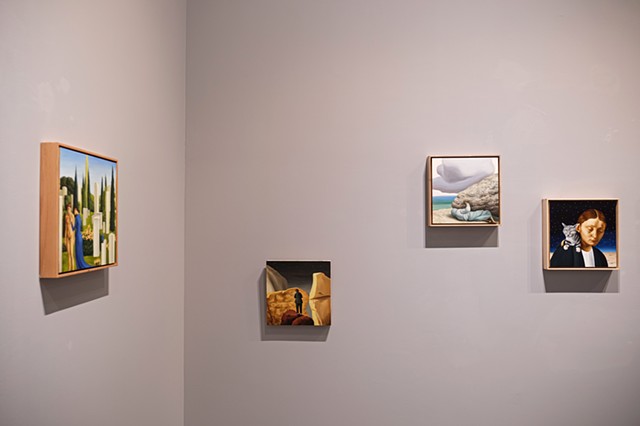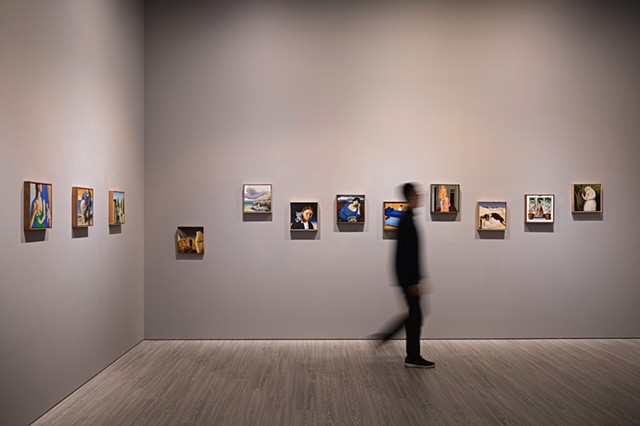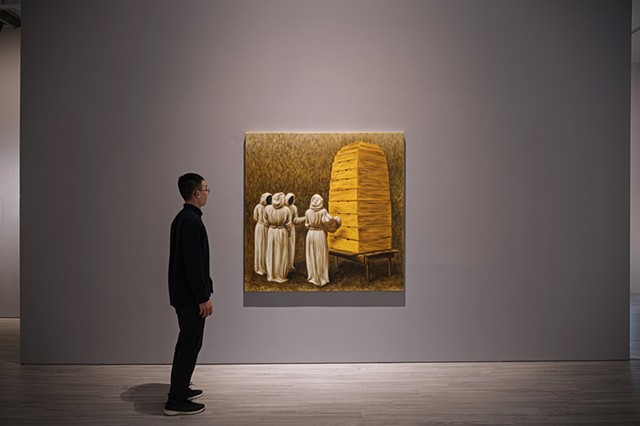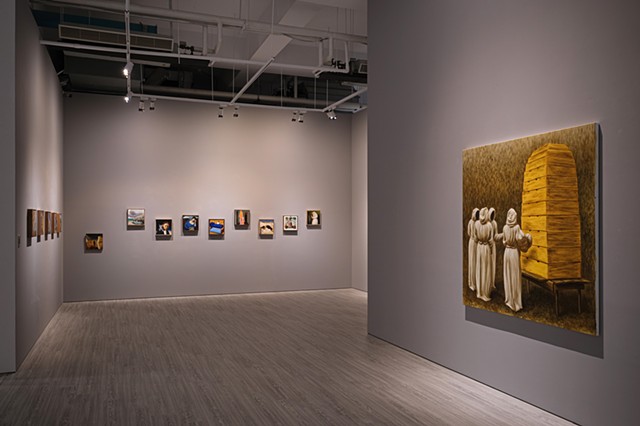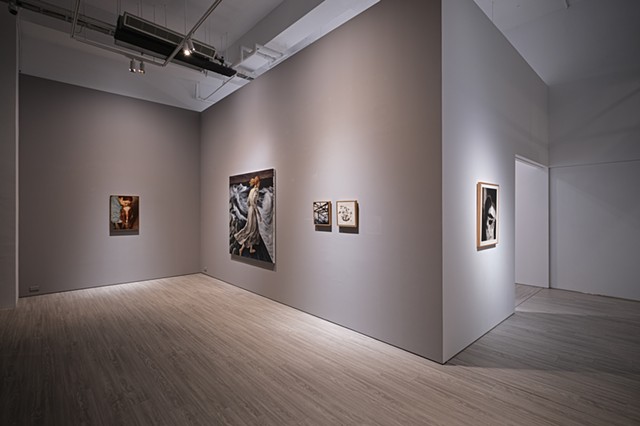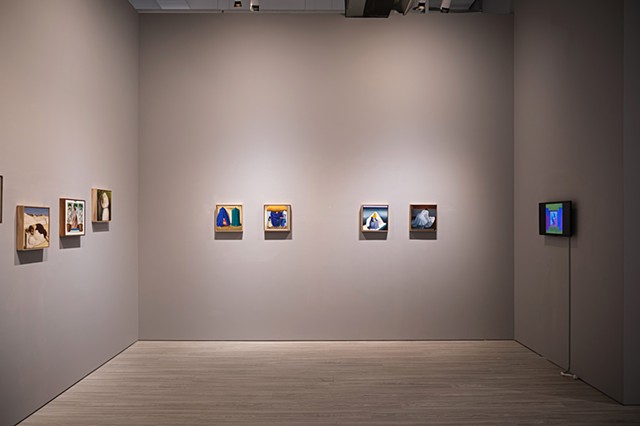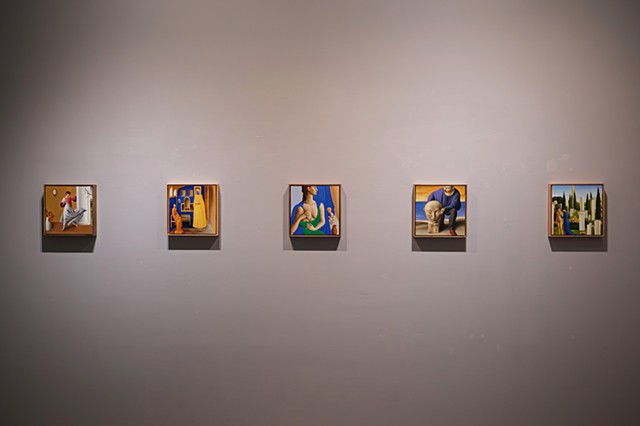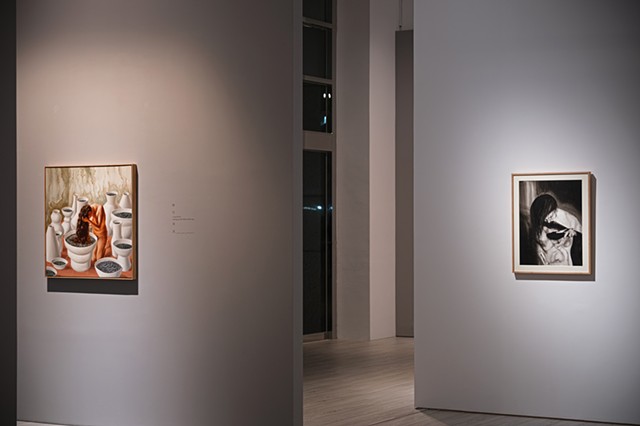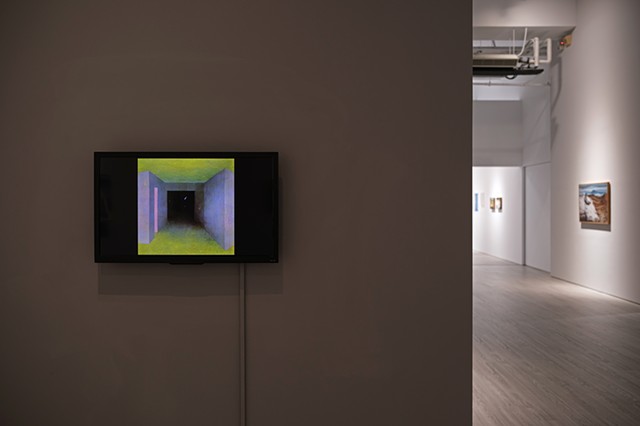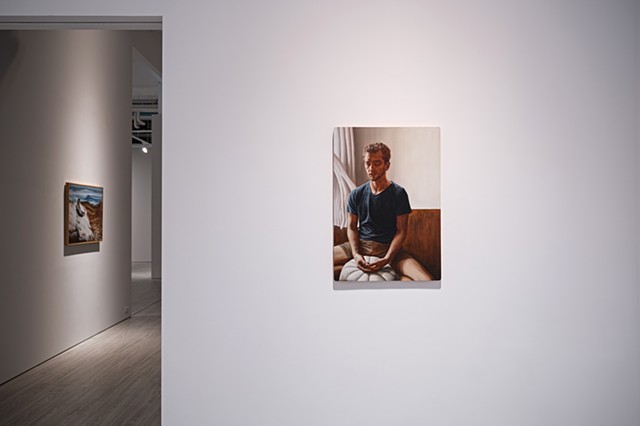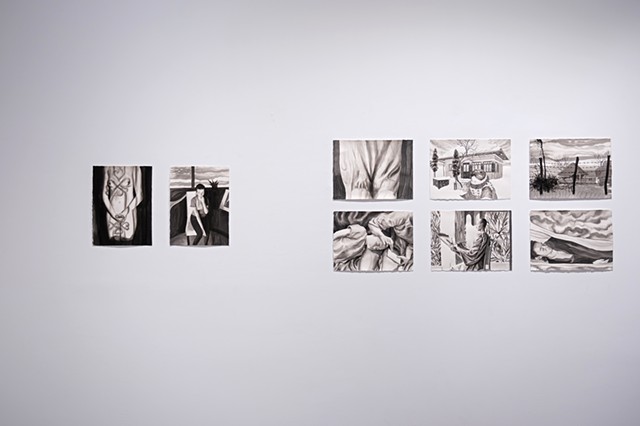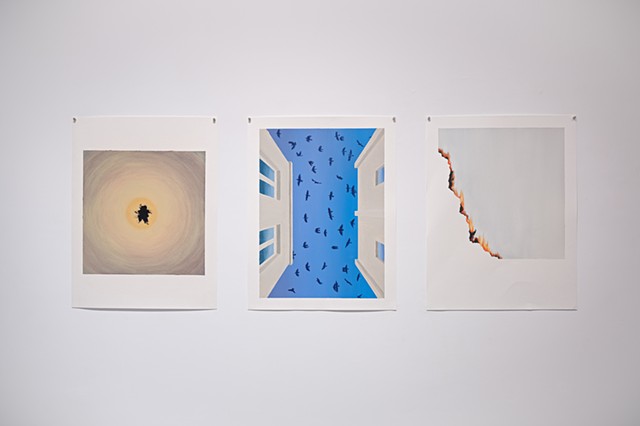Ironing out the Waves of the Sea
Mind Set Art Center
Taipei, Taiwan
2023
In Ironing out the Waves of the Sea, Dragoș Bădiță delves into the essence of existence, shifting the focus away from tangible objects and towards the ceaseless flow of consciousness that defines our lives. The artist reflects on the ephemeral quality of moments, highlighting the fleeting and ever-changing nature of our experiences. Bădiță describes this exploration as both terrifying and freeing, embodying the constant movement of water without solid ground. The exhibition unfolds as a poignant narrative, capturing the essence of Bădiță's artistic pursuits. Through meticulous, miniature-like paintings, the artist endeavors to freeze certain waves of existence, giving form to the relentless tides crashing ashore. These works are juxtaposed with a hypnotic animation that seamlessly morph from rocks to cities, glaciers to couples in their beds, silent flowers to mountains in the fog. The contrast between the static paintings and the dynamic animations serves as a metaphor for the artist's hopeless yet determined endeavor to capture and share fleeting moments.
In Iceland, an ethereal mist, carried by the wind, envelops a figure, bestowing a sense of warmth upon the contemplative observer who gazes towards distant mountains and a sea of clouds. The transition from fire to smoke mirrors the rhythmic nature of waves—a perpetual cycle of transformations, captured and frozen in a singular moment. In the latest work Waves, Bădiță uses dramatic lighting to depict a girl running towards the waves. The contrasting perspectives of the figure and the background leave viewers wondering whether the girl's path ahead is truly the ocean, or a juxtaposition of time and space. It is full of intrigue and imagination. In other pieces, such as Messenger and Mother, we can see the artist curates his artistic repertoire from Medieval religious paintings. He seizes the opportunity to reimagine the scene through a contemporary lens, amalgamating and blending unexpected cultural references across seemingly disparate realms, bridging the gap between the personal and the universal. He also draws inspiration from the opulent tapestry of European painting, particularly the works of masters like Pieter Bruegel and Hieronymus Bosch. Through a discerning selection of motifs, he crafts a visual language resonant with mythological and allegorical undertones, establishing a palpable sense of warmth and familiarity with the subjects he brings to life. In conclusion, his artistic pursuits involve grappling with the fleeting nature of existence, capturing moments that are inherently transient. Simultaneously, his work encapsulates an ineffable essence that resonates with enduring collective experiences.
